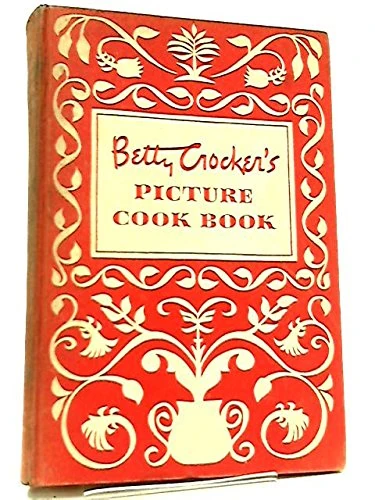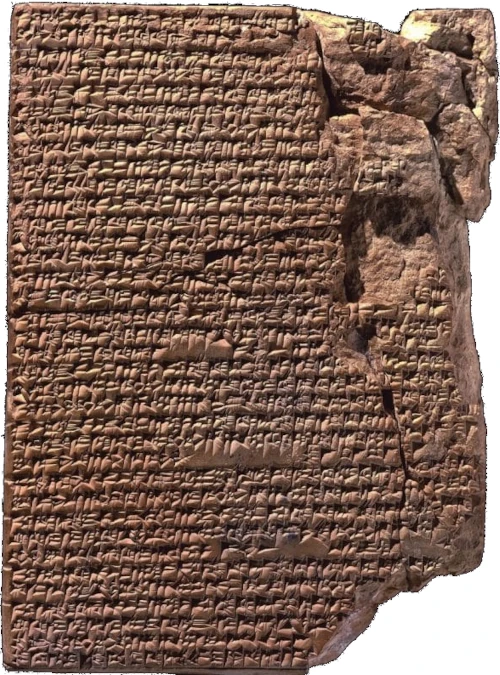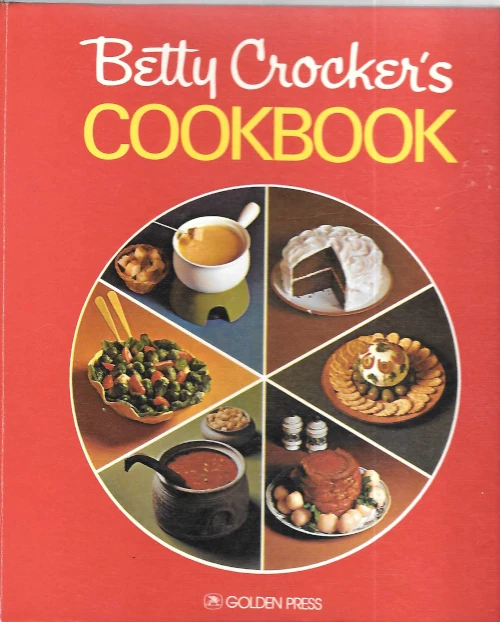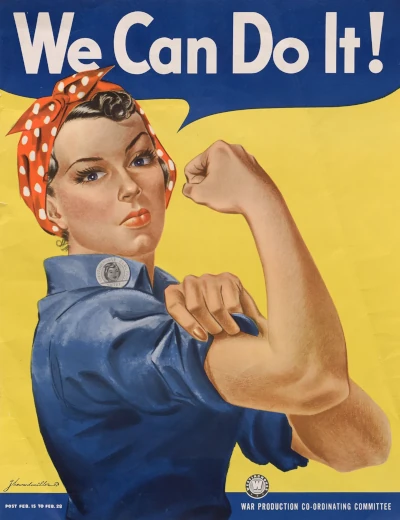The History of Cookbooks: From Ancient Times to Betty Crocker

cookbook - 1950
Cookbooks, those cherished compendiums of culinary wisdom, have a rich and captivating history that spans centuries. These gastronomic guides have evolved from rudimentary lists of ingredients etched onto clay tablets in ancient Mesopotamia to the beautifully illustrated and comprehensive volumes we are familiar with today. They serve as portals into the past, offering insights into the dietary habits, cultural practices, and societal norms of different eras. From the extravagant feasts of medieval royalty to the comforting home-cooked meals of the 20th century, cookbooks chronicle our ever-changing relationship with food. They are not merely manuals for meal preparation, but historical documents that reflect our evolving tastes, technologies, and lifestyles.
In this grand tapestry of culinary history, Betty Crocker, a name deeply woven into the fabric of American home cooking, has been a comforting and familiar presence in kitchens across the nation for many generations. The cookbooks that proudly bear her name serve as more than just compilations of recipes; they are historical chronicles that document the evolution of culinary practices and are enduring testaments to the timeless appeal and warmth of meals cooked at home.
While her namesake cookbooks brought about a significant revolution in the landscape of American kitchens during the mid-20th century, dramatically changing the way we approach food and cooking, the roots of these culinary guides reach much further back in time. The origins of cookbooks as we know them extend far beyond the realm of Betty Crocker's influence, tracing a fascinating journey through centuries of culinary history and cultural transformation. This journey underscores the enduring importance of cookbooks, not just as guides for preparing meals, but as invaluable records of our shared culinary heritage.

The Earliest Cookbooks

circa 1750 BCE
The history of cookbooks is a fascinating journey through time, reflecting the evolution of culinary practices, societal norms, and cultural tastes. The Yale Culinary Tablets, often recognized as the world's oldest written recipe book, offer a fascinating glimpse into the culinary practices of ancient Mesopotamia. Dating back to the Old Babylonian period around 1750 BC, these tablets are currently housed in the Yale Babylonian Collection at Yale University.
The collection comprises three clay tablets, each inscribed in cuneiform, one of the earliest known systems of writing. The tablets contain a total of 35 recipes, including 21 recipes for stews or broths, 8 recipes for meat pies, and several others for porridges, soups, and cakes. The recipes are quite elaborate, with some requiring more than 20 ingredients, including a variety of meats, vegetables, and spices, as well as dairy products like cheese and butter.
Interestingly, these recipes were not intended for everyday cooking. Instead, they were likely prepared for royal or religious occasions, given the complexity of the recipes and the use of luxury ingredients such as exotic spices and game meats. The tablets also do not provide step-by-step instructions as modern recipes do. Instead, they offer a list of ingredients and a brief overview of the cooking process, assuming a certain level of culinary knowledge on the part of the reader.
The Yale Culinary Tablets provide invaluable insights into the sophisticated culinary culture of ancient Mesopotamia. They reveal a cuisine that was rich and varied, with a strong emphasis on stews and broths, and a fondness for combining meats with a variety of grains, vegetables, and spices. These ancient recipes not only shed light on the culinary practices of the time but also highlight the enduring nature of our love for good food.

Cooking through the Centuries
The history of cookbooks is a fascinating journey through time, reflecting the evolution of culinary practices, societal norms, and cultural tastes. The earliest known cookbook from the Western world, "Apicius," dates back to the 1st century AD, offering a glimpse into the culinary practices of ancient Rome. However, it wasn't until the invention of the printing press in the 15th century that cookbooks became more widely available, marking a significant milestone in the democratization of culinary knowledge.
These early cookbooks were often elaborate affairs, intended for the kitchens of the wealthy and professional chefs. They were more than just collections of recipes; they were statements of class and culture, reflecting the tastes and traditions of the time. For instance, "Le Viandier," one of the earliest French cookbooks, was written in the 14th century for the court of Charles V of France, showcasing the sophisticated and lavish culinary practices of the French nobility.
The history of American cookbooks is equally intriguing. One of the earliest American cookbooks was "American Cookery" by Amelia Simmons, published in 1796. This was the first cookbook to offer recipes using American ingredients and cooking methods, marking a departure from the European cookbooks that had dominated until then. Recipes included "Indian Slapjack," "Johny Cake," and "Pompkin Pudding," which is recognized as an early recipe for pumpkin pie.
Another notable early American cookbook is "The Virginia Housewife" by Mary Randolph, published in 1824. Often considered the first regional American cookbook, it includes recipes that reflect the diverse cultural influences of the South, including African, Native American, and European culinary traditions.
In the 19th century, cookbooks also began to serve a didactic purpose, teaching not just recipes but also domestic skills and moral values. "The Frugal Housewife" by Lydia Maria Child, published in 1829, is a prime example of this, offering advice on various aspects of domestic management and frugality in addition to recipes.
The evolution of cookbooks reflects the broader societal and cultural changes of the times. From the elaborate feasts of the European nobility to the practical and regional dishes of early America, cookbooks offer a fascinating insight into our culinary past. They are historical documents that tell us not just about how we cooked, but also about who we were and how we lived.

The Betty Crocker Cookbook

1969
The 1950s marked a significant shift in American cooking. Post-war prosperity led to an increase in home ownership and the modernization of the kitchen. New appliances like the refrigerator and the electric stove made cooking easier and more efficient. This era also saw the rise of convenience foods and pre-packaged meals, reflecting the busy lifestyles of the American middle class.
Betty Crocker cookbooks played a significant role during this transformative era. Betty Crocker, a fictional character created by the Washburn-Crosby Company (later General Mills), became a household name. Her first cookbook, "Betty Crocker's Picture Cook Book," was published in 1950 and quickly became a hit, selling over 2.5 million copies in its first year alone.. It was more than just a cookbook; it was a guide to modern homemaking, offering advice on everything from meal planning to table setting.
But who was Betty Crocker really? The name was created in 1921 as a way to respond to customer inquiries. The signature on the responses was that of Betty Crocker, a name chosen for its wholesomeness and reliability. The character of Betty Crocker was further developed through radio broadcasts and later television shows, where she was portrayed by various actresses. Despite not being a real person, Betty Crocker was named the second most popular woman in America in 1945, second only to Eleanor Roosevelt.
One of the key factors contributing to the success of the Betty Crocker cookbooks was their approachability. The cookbooks were designed to be practical and easy to use. They featured step-by-step instructions, helpful tips, and plenty of illustrations. The recipes were tested in the Betty Crocker kitchens and were designed to be foolproof, giving home cooks the confidence to try new dishes. This made them a hit with home cooks of all skill levels, from novices to seasoned chefs.
Over the years, the Betty Crocker cookbooks have evolved to reflect changes in American culinary tastes and trends. New editions have introduced recipes from various international cuisines, reflecting the growing diversity of the American palate. At the same time, they have maintained a focus on classic American dishes, preserving the culinary heritage of the nation.

Societal Changes in the Kitchen

The influence of Betty Crocker cookbooks indeed permeates far beyond the realm of the kitchen. They serve as mirrors, reflecting the significant social and cultural shifts of their time, including the emergence of the suburban middle class and the evolving role of women in society.
In the mid-20th century, when Betty Crocker became a household name, America was experiencing a post-war boom. Suburban neighborhoods were expanding, and the middle class was growing. The kitchen, often the heart of these new suburban homes, became a symbol of prosperity and comfort. Betty Crocker cookbooks, with their easy-to-follow recipes and focus on home-cooked meals, catered perfectly to this new demographic of home cooks, many of whom were women navigating the nuances of suburban life.
However, the impact of these cookbooks was not merely culinary. They also played a role in shaping societal expectations of women and their place within the domestic sphere. During this era, women were often portrayed as homemakers, their identities tied to their abilities to create nurturing home environments and provide nutritious meals for their families. Betty Crocker, with her ever-reliable recipes and kitchen wisdom, became an icon of this idealized domesticity.
However, it's important to acknowledge that this narrative was embedded within a broader societal context that often pigeonholed women into domestic roles, thereby curtailing their opportunities for personal and professional development. A growing feminist movement continued to challenge this narrative, advocating for the recognition of women's roles beyond the domestic sphere and for their right to choose their paths freely.
As we look back, we can see that the changing role of women in society was reflected in the evolution of Betty Crocker cookbooks themselves. Over the years, as women increasingly joined the workforce and fought for their rights, these cookbooks began to adapt, offering quicker recipes and acknowledging the time constraints of working women.
In this sense, Betty Crocker cookbooks serve as culinary chronicles of women's journey towards empowerment and equality. They remind us of a time when women were primarily confined to the kitchen, highlight the progress that has been made, and underscore the ongoing struggle for gender equality in all spheres of life.
The influence of Betty Crocker cookbooks extends beyond the kitchen. They reflect the social and cultural changes of the time, from the rise of the suburban middle class to the changing role of women in society. They also played a role in shaping our understanding and appreciation of food, turning cooking from a chore into a creative and enjoyable activity.
The history of cookbooks, the changes in American cooking during the 1950s, and the influence of Betty Crocker cookbooks provide a fascinating insight into our culinary past. Her cookbooks have not only provided countless delicious recipes but have also shaped our culinary traditions and attitudes towards cooking. They remind us that cooking is more than just a means to an end; it's a reflection of our culture, our values, and our way of life. As we look to the future, there's no doubt that Betty Crocker will continue to be a guiding light in kitchens across America.